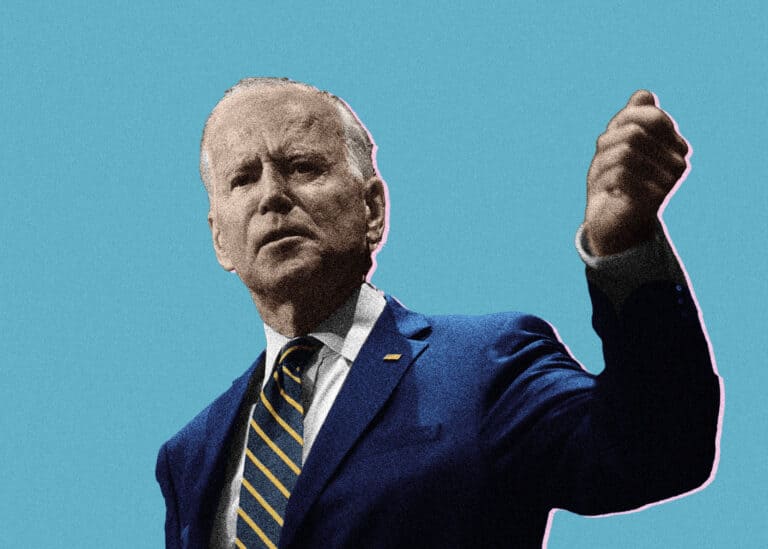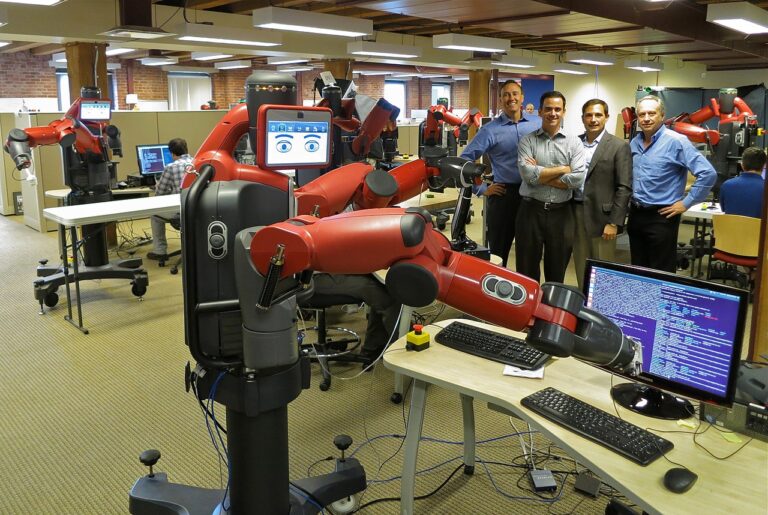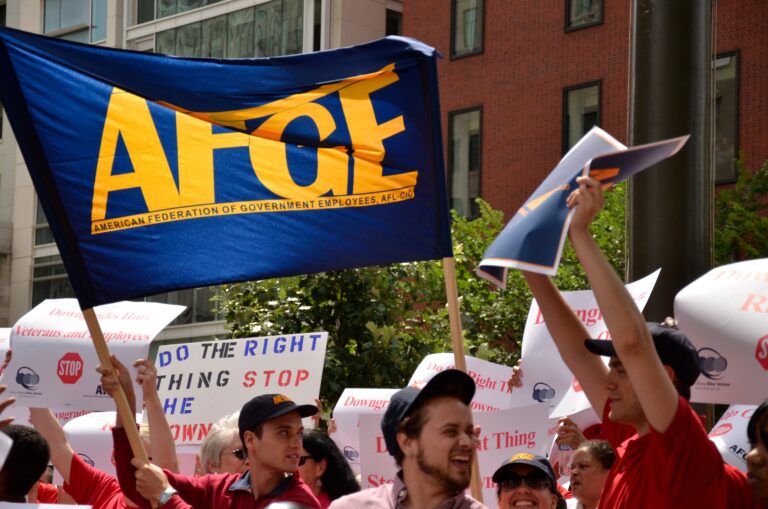
Reed Shaw is a Policy Counsel at Governing for Impact.
The Teamsters union made big news with their announcement last month that a group of Amazon delivery drivers (working for a third party delivery contractor named Battle Tested Strategies or “BTS”) had – for the first time – unionized and negotiated a contract. The messy aftermath underscores how crucial it is that the National Labor Relations Board’s (“NLRB”) forthcoming final rule on joint employment includes worker surveillance as a factor in its finding of control.
Joint Employment and Surveillance
Under the National Labor Relations Act (“NLRA”), workers can bargain with and file labor law complaints against their employer. In the modern economy, though, identifying a worker’s actual employer (or employers) can be a deceptively complex task. “Lead” firms often franchise their businesses or contract out work to third-party staffing agencies that directly employ workers. Deciding whether those workers can force the lead firm to bargain with their union or hold a lead firm liable for many types of labor law violations can turn on whether the NLRB considers the lead firm to be a joint employer of the workers. The basics of the test are rooted in judicial precedent and focus on the level of control a company has over workers.
In September 2022, the NLRB issued a proposed rule that would clarify the test for when a lead firm will be held responsible as a joint employer of the employees of its contractors. The NLRB’s proposal is a solid foundation that will help workers hold their employers accountable.
However, unlike the DOL’s independent contractor rule, the NLRB’s proposed joint employer rule failed to explicitly consider the role that workplace surveillance technologies should play in a finding of “control.” In the days before sophisticated surveillance technologies, companies that wanted to exert control over their workers – usually with the goals of increasing worker speed and imposing discipline – had to hire additional on-site supervisors to monitor and manage those employees. This practice proved effective but imposed reciprocal (and sometimes costly) obligations on employers. Judicial precedent had long recognized on-site supervision as a hallmark of a traditional employment relationship, and so companies that wanted to exert increased control would be required to satisfy traditional employer responsibilities like liability under workers’ compensation, wage and hour, and labor statutes.
No longer. More and more, companies including Amazon seek to abdicate their responsibilities as employers by “domestically outsourcing” their workforces through temporary staffing agencies, contractors, and franchise models. Under these new arrangements, companies look to offload the costs and liabilities inherent to being an employer onto other entities and onto workers themselves. At the same time, however, the companies implement surveillance technologies and practices that allow them to retain control over workers. Especially in situations where the surveillance itself negatively affects working conditions, this prevents workers from exercising their rights under labor law to file complaints and bargain with the employer who has the power to remedy their problems.
To understand how this plays out, consider McDonald’s. McDonald’s is mostly a franchise business, which means that the ubiquitous golden arch stores are primarily owned and operated by individual franchisors, who hire their own employees, rather than the multinational corporation. Instead of directly employing store managers and their employees, McDonald’s purports to be involved in a business-to-business relationship with the franchise owner. However, even though McDonald’s is not the workers’ immediate employer, the company enforces strict policies about myriad facets of worker conduct and franchisee management.
That control has strengthened in recent decades as McDonald’s increased surveillance over its franchisors’ employees. In the 2010s, McDonald’s started requiring franchises to implement various surveillance technologies in their businesses. For example, the company installed point-of-sale technology on franchisee cash registers, which allowed headquarters to monitor transaction speed and frequency.
Other technologies prescribed how franchisees set employee schedules and screened job applicants, and even how workers are expected to address their customers. For example, a McDonald’s worker interviewed by Jobs With Justice explained how headquarters and her franchisee boss monitored her to ensure that she asked drive-thru customers whether they would use the McDonald’s app for their orders. Similarly, she claimed that cameras are used to enforce cooking and cleaning standards.
In 2014, the NLRB’s General Counsel issued a complaint against McDonald’s for alleged labor law violations that centered on the company’s retaliation against workers for their participation in the “Fight for $15” movement. The General Counsel alleged that McDonald’s surveilled, fired, and disciplined workers over their protests for higher wages, which is activity that Section 7 of the National Labor Relations Act (“NLRA”) protects.
Not only did McDonald’s deny having participated in the alleged conduct, the company also denied possessing any labor law obligations to McDonald’s workers whatsoever. The company claimed that the workers were employed by the franchisees alone, and therefore McDonald’s was not liable under the NLRA. In a settlement agreement negotiated by a conservative NLRB General Counsel, McDonald’s was allowed to absolve itself of joint employer liability for the labor law abuses.
Amazon and the Teamsters
Situations like the BTS-Amazon-Teamsters morass is precisely why Governing for Impact and Jobs with Justice asked the NLRB to update its proposal to include a discussion of surveillance technology-enabled control.
In April, 84 drivers working for BTS formed a Teamsters union, which BTS voluntarily recognized. Amazon immediately announced that it had already given notice to BTS that it would be canceling its contract. The Teamsters then filed a complaint against Amazon, alleging (among other things) that the company violated the NLRA by terminating BTS’s contract due to organizing activities.
Although a company canbe held liable for some unfair labor practices against the employees of their contractors, whether Amazon’s decision to terminate its contract with BTS constitutes an NLRA violation may hinge directly on whether the company is found to be a joint employer of the BTS employees.
As a BTS spokesperson explained, Amazon exerts heavy control over BTS workers by, for example, designing their routes, determining the number of packages a driver must deliver, and setting time performance standards. Amazon enforces all of these types of control through its sophisticated workplace surveillance apparatus, which includes on-truck cameras, hand-held devices, and even automated emails that fire workers. Although the Teamsters make a compelling case that Amazon is an employer of the unionized BTS employees “[u]nder any standard,” clarifying the role that workplace surveillance should play in the joint employer determination would more accurately capture the reality of the modern economy and workforce management practices.
Our hope is that the proposal described in our comment will help enable workers to exercise their NLRA rights, particularly against companies that use surveillance technology to control day-to-day workplace realities even while attempting to disclaim the responsibilities of a traditional employment relationship.










Daily News & Commentary
Start your day with our roundup of the latest labor developments. See all
December 5
Netflix set to acquire Warner Bros., Gen Z men are the most pro-union generation in history, and lawmakers introduce the “No Robot Bosses Act.”
December 4
Unionized journalists win arbitration concerning AI, Starbucks challenges two NLRB rulings in the Fifth Circuit, and Philadelphia transit workers resume contract negotiations.
December 3
The Trump administration seeks to appeal a federal judge’s order that protects the CBAs of employees within the federal workforce; the U.S. Department of Labor launches an initiative to investigate violations of the H-1B visa program; and a union files a petition to form a bargaining unit for employees at the Met.
December 2
Fourth Circuit rejects broad reading of NLRA’s managerial exception; OPM cancels reduced tuition program for federal employees; Starbucks will pay $39 million for violating New York City’s Fair Workweek law; Mamdani and Sanders join striking baristas outside a Brooklyn Starbucks.
December 1
California farmworkers defend state labor law, cities consider requiring companies to hire delivery drivers, Supreme Court takes FAA last-mile drivers case.
November 30
In today’s news and commentary, the MSPB issues its first precedential ruling since regaining a quorum; Amazon workers lead strikes and demonstrations in multiple countries; and Starbucks workers expand their indefinite strike to additional locations. Last week, the Merit Systems Protection Board (MSPB) released its first precedential decision in eight months. The MSPB had been […]